|
A.S.S.E.Psi.
web site (History of Psychiatry and Psychoanalytic Psychotherapy
)
A.S.S.E.Psi.NEWS
(to subscribe our monthly newsletter)
Ce.Psi.Di. (Centro
di Psicoterapia Dinamica "Mauro Mancia")
Maitres
à dispenser (Our reviews about psychoanalytic congresses)
Biblio
Reviews (Recensioni)
Congressi
ECM (in italian)
Events
(our congresses)
Tatiana Rosenthal
and ... other 'psycho-suiciders'
Thalassa.
Portolano of Psychoanalysis
PsychoWitz - Psychoanalysis and Humor (...per ridere un po'!)
Giuseppe Leo's Art
Gallery
Spazio
Rosenthal (femininity and psychoanalysis)
Psicoanalisi
Europea Video
Channel
A.S.S.E.Psi. Video
Channel
Ultima uscita/New issue:

"Essere bambini a Gaza. Il trauma
infinito"
Authored
by/autore: Maria Patrizia Salatiello
Editore/Publisher: Edizioni Frenis Zero
Collection/Collana: Mediterranean
Id-entities
Anno/Year:
2016
Pagine/Pages:
242
ISBN:978-88-97479-08-6

Psychoanalysis,
Collective Traumas and Memory Places (English Edition)
Edited
by/a cura di: Giuseppe Leo Prefaced by/prefazione
di:
R.D.Hinshelwood
Writings by/scritti di: J. Altounian
W. Bohleber J. Deutsch
H. Halberstadt-Freud Y. Gampel
N. Janigro R.K. Papadopoulos
M. Ritter S. Varvin H.-J. Wirth
Editore/Publisher: Edizioni Frenis Zero
Collection/Collana: Mediterranean
Id-entities
Anno/Year:
2015
Pagine/Pages:
330
ISBN:978-88-97479-09-3

"L'uomo
dietro al lettino" di
Gabriele Cassullo
Prefaced
by/prefazione di: Jeremy
Holmes
Editore/Publisher: Edizioni Frenis Zero
Collection/Collana: Biografie
dell'Inconscio
Anno/Year:
2015
Pagine/Pages:
350
ISBN:978-88-97479-07-9
Prezzo/Price:
€ 29,00
Click
here to order the book
(per Edizione
rilegata- Hardcover clicca qui)
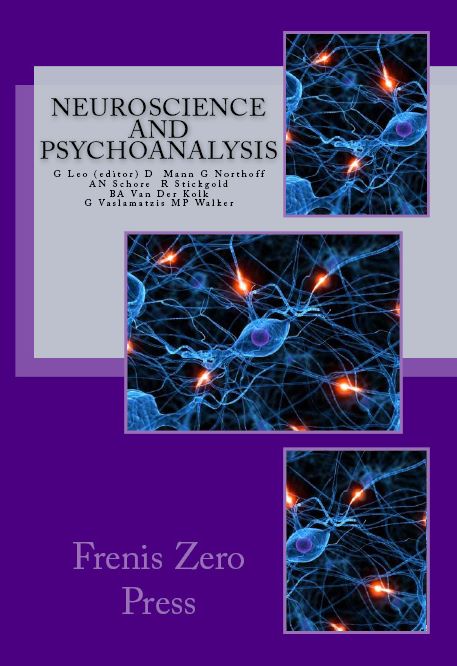
"Neuroscience
and Psychoanalysis" (English Edition)
Edited by/a cura di: Giuseppe Leo Prefaced by/prefazione
di: Georg Northoff
Writings by/scritti di: D. Mann
A. N. Schore R. Stickgold
B.A. Van Der Kolk G. Vaslamatzis M.P. Walker
Editore/Publisher: Edizioni Frenis Zero
Collection/Collana: Psicoanalisi e neuroscienze
Anno/Year: 2014
Pagine/Pages: 300
ISBN:978-88-97479-06-2
Prezzo/Price: € 49,00
Click
here to order the book
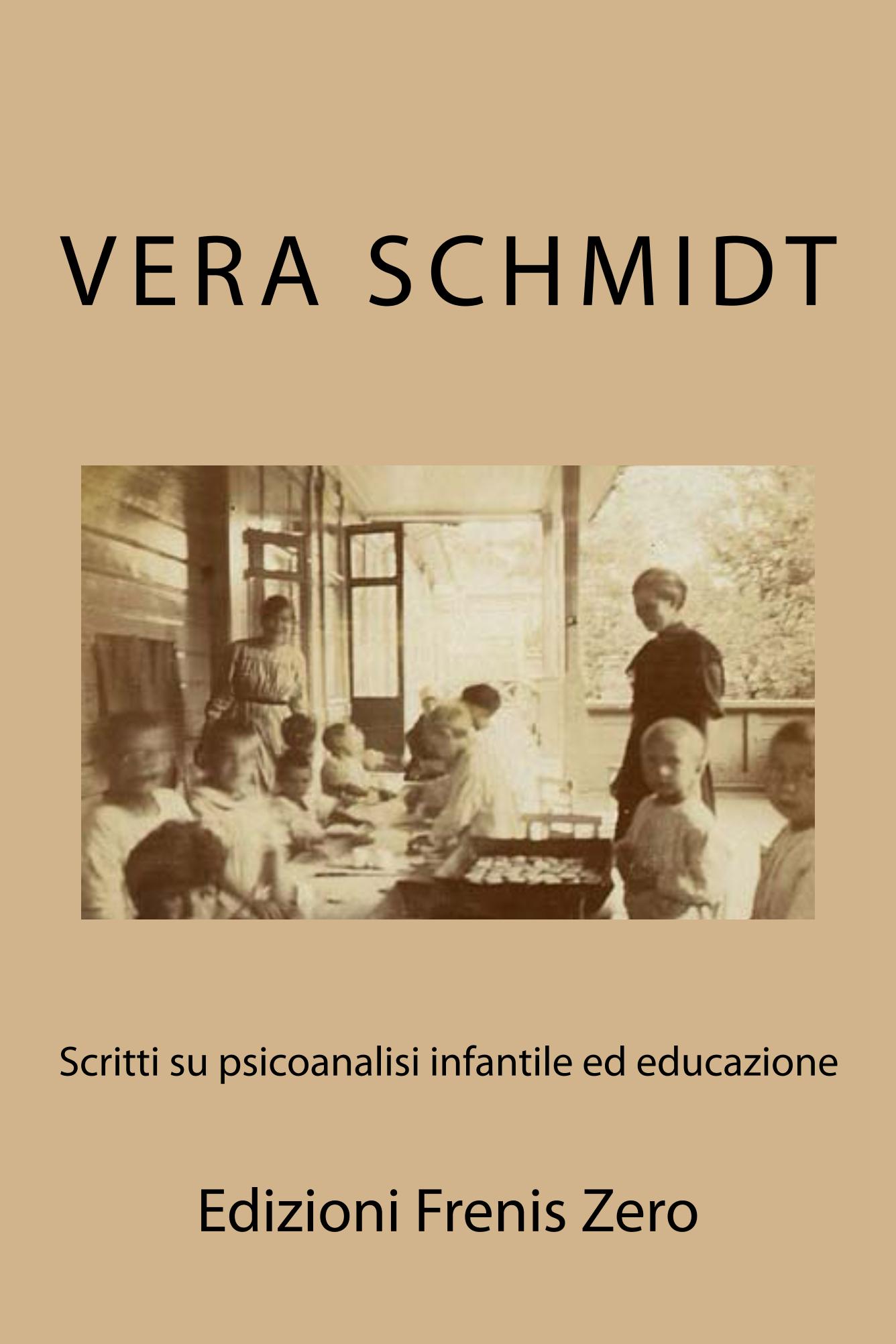
Vera
Schmidt, "Scritti su psicoanalisi infantile ed
educazione"
Edited by/a cura di: Giuseppe Leo Prefaced by/prefazione
di: Alberto Angelini
Introduced by/introduzione di: Vlasta Polojaz
Afterword by/post-fazione di: Rita Corsa
Editore/Publisher: Edizioni Frenis Zero
Collana: Biografie dell'Inconscio
Anno/Year: 2014
Pagine/Pages: 248
ISBN:978-88-97479-05-5
Prezzo/Price: € 29,00
Click
here to order the book

Resnik,
S. et al. (a cura di Monica Ferri), "L'ascolto dei
sensi e dei luoghi nella relazione terapeutica"
Writings by:A.
Ambrosini, A. Bimbi, M. Ferri, G.
Gabbriellini, A. Luperini, S. Resnik,
S. Rodighiero, R. Tancredi, A. Taquini Resnik,
G. Trippi
Editore/Publisher: Edizioni Frenis Zero
Collana: Confini della Psicoanalisi
Anno/Year: 2013
Pagine/Pages: 156
ISBN:978-88-97479-04-8
Prezzo/Price: € 37,00
Click
here to order the book
Silvio
G. Cusin, "Sessualità e conoscenza"
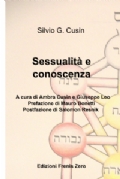
A cura di/Edited by: A. Cusin & G. Leo
Editore/Publisher: Edizioni Frenis Zero
Collana/Collection: Biografie dell'Inconscio
Anno/Year: 2013
Pagine/Pages: 476
ISBN: 978-88-97479-03-1
Prezzo/Price:
€ 39,00
Click
here to order the book
AA.VV.,
"Psicoanalisi e luoghi della riabilitazione", a cura
di G. Leo e G. Riefolo (Editors)
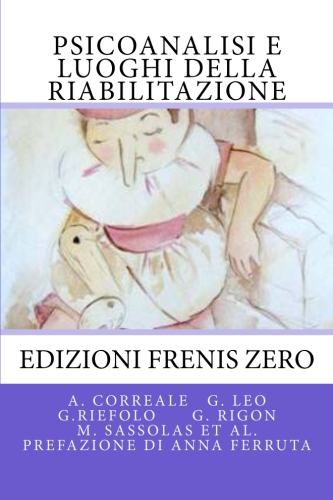
A cura di/Edited by: G. Leo & G. Riefolo
Editore/Publisher: Edizioni Frenis Zero
Collana/Collection: Id-entità mediterranee
Anno/Year: 2013
Pagine/Pages: 426
ISBN: 978-88-903710-9-7
Prezzo/Price:
€ 39,00
Click
here to order the book
AA.VV.,
"Scrittura e memoria", a cura di R. Bolletti (Editor)

Writings by: J.
Altounian, S. Amati Sas, A. Arslan, R. Bolletti, P. De
Silvestris, M. Morello, A. Sabatini Scalmati.
Editore/Publisher: Edizioni Frenis Zero
Collana: Cordoglio e pregiudizio
Anno/Year: 2012
Pagine/Pages: 136
ISBN: 978-88-903710-7-3
Prezzo/Price: € 23,00
Click
here to order the book
AA.VV., "Lo
spazio velato. Femminile e discorso
psicoanalitico"
a cura di G. Leo e L. Montani (Editors)
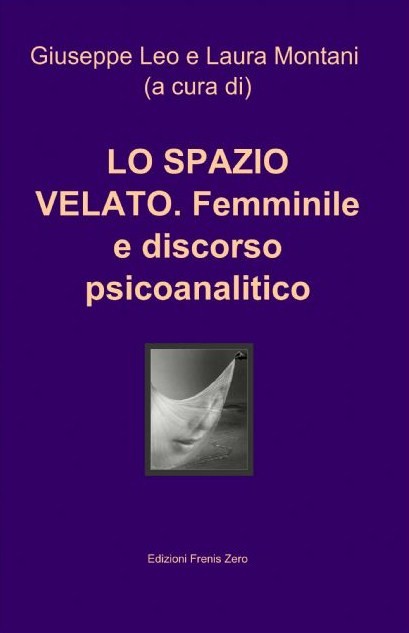
Writings by: A.
Cusin, J. Kristeva, A. Loncan, S. Marino, B.
Massimilla, L. Montani, A. Nunziante Cesaro, S.
Parrello, M. Sommantico, G. Stanziano, L.
Tarantini, A. Zurolo.
Editore/Publisher: Edizioni Frenis Zero
Collana: Confini della psicoanalisi
Anno/Year: 2012
Pagine/Pages: 382
ISBN: 978-88-903710-6-6
Prezzo/Price: € 39,00
Click
here to order the book
AA.VV., Psychoanalysis
and its Borders, a cura di
G. Leo (Editor)

Writings by: J. Altounian, P.
Fonagy, G.O. Gabbard, J.S. Grotstein, R.D. Hinshelwood, J.P.
Jimenez, O.F. Kernberg, S. Resnik.
Editore/Publisher: Edizioni Frenis Zero
Collana/Collection: Borders of Psychoanalysis
Anno/Year: 2012
Pagine/Pages: 348
ISBN: 978-88-974790-2-4
Prezzo/Price: € 19,00
Click
here to order the book
AA.VV.,
"Psicoanalisi e luoghi della negazione", a cura di A.
Cusin e G. Leo

Writings by:J.
Altounian, S. Amati Sas, M. e M. Avakian, W. A.
Cusin, N. Janigro, G. Leo, B. E. Litowitz, S. Resnik, A.
Sabatini Scalmati, G. Schneider, M. Šebek,
F. Sironi, L. Tarantini.
Editore/Publisher: Edizioni Frenis Zero
Collana/Collection: Id-entità mediterranee
Anno/Year: 2011
Pagine/Pages: 400
ISBN: 978-88-903710-4-2
Prezzo/Price: € 38,00
Click
here to order the book
"The Voyage Out" by Virginia
Woolf

Editore/Publisher: Edizioni Frenis Zero
ISBN: 978-88-97479-01-7
Anno/Year: 2011
Pages: 672
Prezzo/Price: € 25,00
Click
here to order the book
"Psicologia
dell'antisemitismo" di Imre Hermann
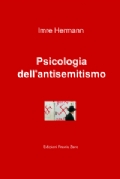
Author:Imre Hermann
Editore/Publisher: Edizioni Frenis Zero
ISBN: 978-88-903710-3-5
Anno/Year: 2011
Pages: 158
Prezzo/Price: € 18,00
Click
here to order the book
"Id-entità mediterranee.
Psicoanalisi e luoghi della memoria" a cura di Giuseppe Leo
(editor)
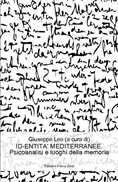
Writings by: J.
Altounian, S. Amati Sas, M. Avakian, W. Bohleber, M. Breccia, A.
Coen, A. Cusin, G. Dana, J. Deutsch, S. Fizzarotti Selvaggi, Y.
Gampel, H. Halberstadt-Freud, N. Janigro, R. Kaës, G. Leo, M.
Maisetti, F. Mazzei, M. Ritter, C. Trono, S. Varvin e H.-J. Wirth
Editore/Publisher: Edizioni Frenis Zero
ISBN: 978-88-903710-2-8
Anno/Year: 2010
Pages: 520
Prezzo/Price: € 41,00
Click
here to have a preview
Click
here to order the book
"Vite soffiate. I vinti della
psicoanalisi" di Giuseppe Leo
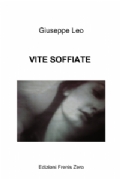
Editore/Publisher: Edizioni Frenis Zero
Edizione: 2a
ISBN: 978-88-903710-5-9
Anno/Year: 2011
Prezzo/Price: € 34,00
Click
here to order the book
"La Psicoanalisi e i suoi
confini" edited by Giuseppe Leo
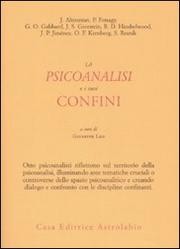
Writings by: J.
Altounian, P. Fonagy, G.O. Gabbard, J.S. Grotstein, R.D.
Hinshelwood, J.P. Jiménez, O.F. Kernberg, S. Resnik
Editore/Publisher: Astrolabio Ubaldini
ISBN: 978-88-340155-7-5
Anno/Year: 2009
Pages: 224
Prezzo/Price: € 20,00
"La Psicoanalisi. Intrecci Paesaggi
Confini"
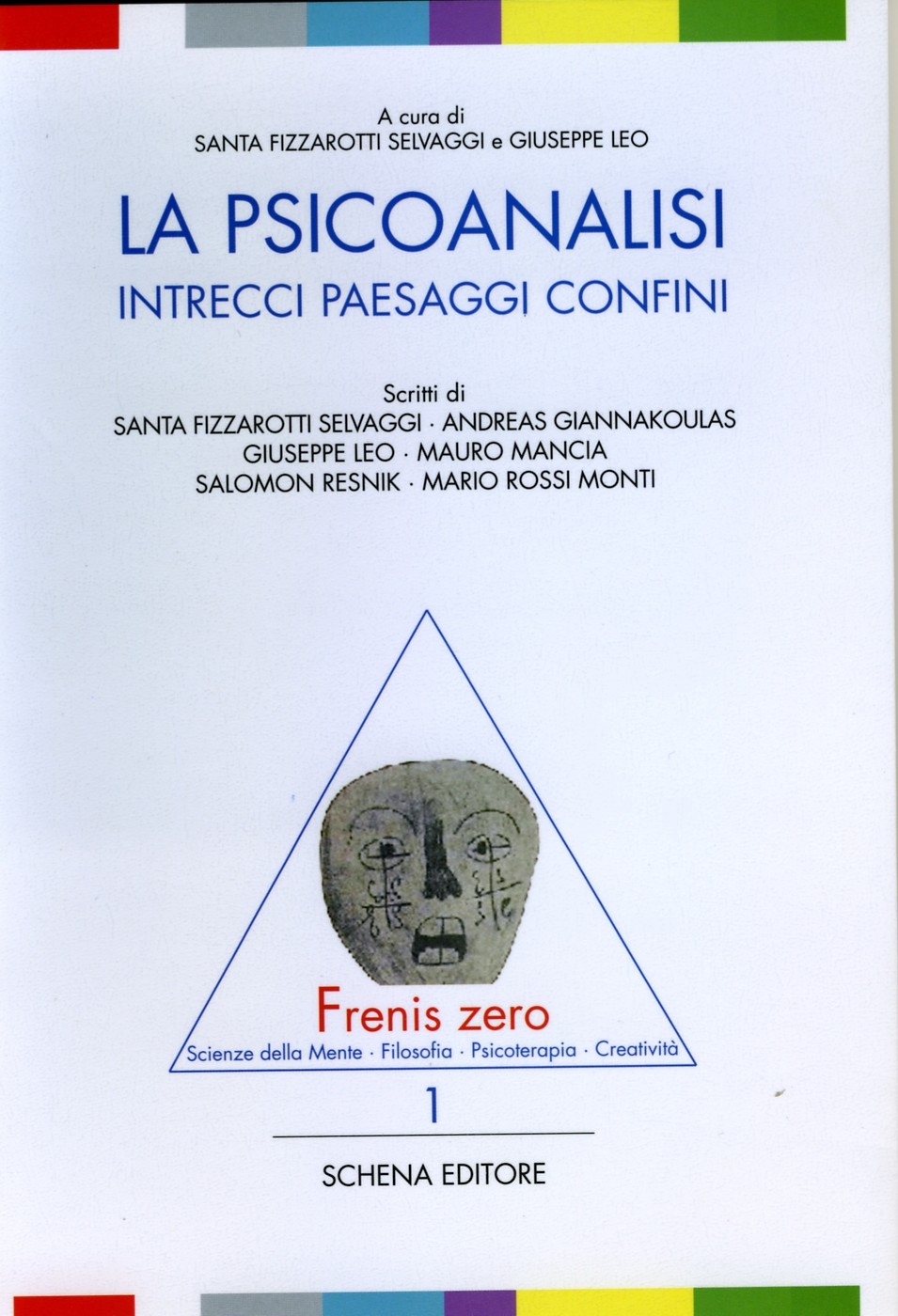
Edited by S. Fizzarotti Selvaggi, G.Leo.
Writings by: Salomon Resnik, Mauro Mancia, Andreas Giannakoulas,
Mario Rossi Monti, Santa Fizzarotti Selvaggi, Giuseppe Leo.
Publisher: Schena Editore
ISBN 88-8229-567-2
Price: € 15,00
Click here to order the
book |
In
2002, Karnac, a publishing house, released the book Constructing
and Deconstructing Woman’s Power[1],
edited by Beth Seelig, Robert Paul and Carol Levy. The topics explored
in this collection of essays, which is devoted to the relationship
between gender and various representations of female strength and
power, are hardly novel. What is much more interesting is the list of
authors that includes outstanding psychoanalysts, such as Helen Meyers,
the former director of the Psychoanalytic Center of the Columbia
University. The book was recommended by two renowned psychoanalysts
and clinical psychiatrists, Otto Kernberg and Ethel Person. Kernberg
is famous for his research on identity, and Person for her
publications on sexuality and psychology of power. As early as 1976,
Kernberg, a theoretician and clinician with a rather lukewarm approach
to postmodernist relativism in psychoanalysis, warned his readers
against an unquestioning acceptance of, and in particular against
overrating, the thesis that women’s adaptation to society is a
conventional process. In his opinion, the women’s potential to
develop new, unconventional adaptive patterns is quite often
underestimated.[2]
We would be hard-pressed to find a clearer declaration of support
expressed by a psychoanalyst in favour of the basic claims of feminism:
the thesis that women as a group are subject to social and
psychological oppression and the thesis that women show a specific
creativity in the area of constructing and maintaining an intrapsychic
and interpsychic autonomy. Following the train of thought presented by
representatives of psychoanalytically oriented feminism, we could say
that psychoanalysis has needed and still needs feminism, mainly to
criticise its blindness to the cultural underpinning of many
psychoanalytic theories of gender. In what follows, I will try to
outline a minimum area of common interest, which was agreed upon in
the debates among the proponents of feminism and psychoanalysis. I
will not go into the discussions between Lacan-oriented postmodernist
feminism with psychoanalysts, since this discourse is quite well
represented in both the contemporary philosophical thought and the
literary criticism. A less known implication of feminist criticism of
psychoanalysis is the influence it has had on the clinical theory of
psychoanalysis. I will return to this interesting question towards the
end of my essay.
There
is also the question of the use that feminism could make of
psychoanalysis, explored for the most part by proponents of
psychoanalytic feminism. Nancy Chodorow, who describes herself as a
social scholar and clinical clinician, resorts both to psychoanalytic
and gender theories to solve this puzzle. In her book Feminism
and Psychoanalytic Theory[3],
she claims that feminism, especially in its liberal and Marxist
versions, has not appreciated the fact that being endowed with a
biological sex and cultural gender is a part of social organisation.
Therefore, the oppression against women cannot be prevented by mere
laws, changed labour conditions or the abolition of the institution of
family. Chodorow reminds radical feminists that the complicated
interplay between gender identity and the choice of sexual objects, or
between various ideals of motherhood and its total rejection, do not
allow for forming too uncompromising and unilateral theses. It would
not be democratic or in any way beneficial to the idea of feminism to
promote ideas such as rejecting biological motherhood or stigmatising
heterosexual relationships as necessarily reproducing relations of
inequality between partners. Chodorow believes that feminism makes a
great mistake by underappreciating unconscious motivations, both in
men and in women, when they come to sustain oppressive customs
directed against women and femininity. Despite her loyalty to feminist
ideas, in many of her works Chodorow strives to ‘absolve’ Freud of
his clearly culturally rooted beliefs on the nature of women.
Feminists could not forgive Freud in particular for his claims about
the necessary, innate weakness of the female superego, and thus their
moral frailty, as well as about their inborn inferiority complex due
to the anatomic ‘flaw’ of not having a penis.[4]
Freud wrote quite extensively about female narcissism and other
womanly pathologies. His theories are but too famous, and contemporary
psychoanalysis has done away with many of his generalisations of this
type, so they are of little interest to us in this article.
Chodorow’s aim was to demonstrate the contradictory nature of many
of Freud’s theses on femininity. It was her very obvious intention
to soften the image of the father of psychoanalysis as perceived by
feminist criticism. However, the discussion of possible applications
of feminist thought in contemporary analysis, which forms the second
part of this book, is less apologetic and much better written.
Referring to the work of the object relations school (Jessica Benjamin[5],
Jane Flax), interpersonal analysis (Jane Flax) and relational analysis
(Jean Baker Miller – a Sullivanist), Chodorow strived to identify
the feminist inspirations visible in various gender theories pursued
in new psychoanalysis.
In
my opinion, we would not be able to talk of new psychoanalysis if it
were not for the emergence of amended identity theories (including
sexual and gender identity), as well as theories of emotions and
memory. The creation of sex and gender identity theories was inspired
by the attempts to construct a new psychology of women. Searching for
a model of a uniquely female track of development soon led to further
questions, also about the interdependence among the development of
various forms of gender. Many contemporary psychoanalysts believe that
genital schematisation in children takes place at an earlier stage
than Freud believed. Such an open rejection of Freud’s classic
theory of the structure and time schedule of human psychosexual
development had important consequences for any attempts to theorise
the construction of gender identity in a child, one of which was the
need to rethink the theoretical construct known as the Oedipus complex.
It had to be reformulated in such a way as to account for the
so-called preoedipal elements and to define their impact on early
pathologies in the development of personality or individual identity.
The shift in psychoanalysts’ attention from the figure of the father
to that of the mother brought with it increasingly radical ideas. In
1976 Robert Stoller, an American psychoanalyst, presented his
hypothesis of primary femininity[6],
thus reversing Freud’s theory that had been based on the normative
male model of psychosexual development and the male identity of
preoedipal girls. Other scholars, including James Kleeman[7]
and Harriet Lerner[8],
pointed to the consequences of parental deficiencies or inhibitions in
labelling and defining maternal sex organs for the needs of children,
especially girls. These deficiencies, as argued by Money and Erhardt[9],
are considered to be of fundamental importance in the process of
shaping early patterns of the body and cognitive models of what is
referred to as core gender identity. In other words, the first steps
taken by now classic psychoanalysts, such as Melanie Klein or Karen
Horney, with the aim to create a new psychology of women, were soon to
turn out to be just the tip of the iceberg in the much more
significant revolution that reformulated Freud’s slogan of the
inevitability of anatomic destiny. In line with this new theory, it is
not so much the anatomy that is inevitable as the cultural branding of
sex and body. Taking these arguments into account, we can infer that
contemporary psychoanalysts are more partial to the theory that direct
genital consciousness and genital experiencing constitute the way in
which sexuality is moulded, and not the other way round. This thesis
presents a serious challenge to, or at least weakens the foundations
of, Freud’s claim that there is an essential relationship between
the female sex and certain forms of pathology, such as hysteria,
frigidity or masochism. In their discussion of the notion of gender
personality, feminists, including Jane Flax and Jessica Benjamin,
pointed to the area of the relational self as problematic for
femininity and burdened with conflict. According to Flax, for instance,
the feminine empathic self, geared to relationships with others, is a
construction imposed on repressed representations of the self
connected with the search for autonomy, for expressing aggression and
sexual impulses.[10]
In Flax’s terms, the female subject, the female self, is uniquely
and systematically deformed or adjusted to fit social expectations.
The so-called typically female pathologies ought to be considered in
the context of cultural gender rather than biological sex. Regardless
of the fact that psychoanalysts have criticised many of Flax’s or
Benjamin’s theses, it has become well established that many
pathologies, and, in more general terms, the unique nature of the
gendered, sexed identity, are determined by culture and gender.
Culture and gender conundrum, that way or another, attracts attention
of many contemporary psychoanalysts. In his recent book on femininity,
Raffael López-Corvo
examines some of the psycho-cultural factors that, in his opinion, led
to both „the
ancestral feminine inhibition” and man’s fear of woman[11].
López-Corvo
has
adopted and expanded a well-known idea of biological imprinting to
explain some cultural and historical processes that have eventually
brought to the denigration of femininity in many cultures. We may
disagree with some of his univesalizing theses and his cultural
overgeneralizations or we may be doubtful about his profetic idea of
the woman of the future, the “Vindicated Eve”, but we could not
underscore the importance of many of his observations[12].
The
more nuanced understanding of genitality as a moulding agent for
sexuality has another yet substantial repercussion: the relativisation
of the idea of normative heterosexuality. In our times, the
psychoanalysts that treat, for instance, homosexual patients, focus
almost entirely on potential pathologies of individual identity and
their effects in the form of personality disorders. To simplify this
issue a bit, it could be said that when a homosexual person turns up
at a psychoanalyst’s consulting room, all too often does it turn out
in psychoanalytic practice that it is not his or her problem of
choosing a homosexual orientation that shows up at the therapist’s
door, it is rather diverse problems from the area of borderline or
narcissistic pathologies, i.e. problems connected with personality
disorders. For many currents of feminist thought, it is of crucial
importance that sexual choices are no longer labelled in terms of
normativity, pathology or ethics, etc. The discussion of the problem
of personality disorders has also shed some light on the issue of
reproduction, which is also vital for feminists. Motherhood, often
considered, especially by radical and libertarian feminists, as a
woman’s curse, has also become problematic in psychoanalytic thought,
although probably not so much from a social as a psychological point
of view. This topic, explored for instance in Nancy Chodorow’s book The Reproduction of Mothering[13],
is closely intertwined with the issues of power and the feelings
of female agency and autonomy. If Chodorow is known for her
feminism-grounded idea of introducing double parenting as a remedial
measure, the psychoanalytic reflection on parenting, and motherhood in
particular, is more focused on identifying the roots of motherhood
pathologies and analysing the consequences of such disorders. This is
where we once again stumble upon the all-pervasive problem of
personality disorders, including narcissism and perversions. In her
book, Chodorow describes mainly the social mechanisms that determine
motherhood disorders and the potential impact of such determinants on
the child and the entire culture of parenting. A counterpoint to the
feminist discussion of the problem of motherhood, construed either as
a form of enslavement or as a uniquely female virtue, can be found in
the work of psychoanalyst Estela Welldon. In her book Mother
Madonna Whore[14],
Welldon puts forward the thesis that the female psychophysiology is
responsible for a model of perversion that is completely different
from what is typical to men. Psychoanalysts look for the aetiology of
both male and female perversions in an incorrect relationship between
an infant and the mother. Therefore, the abusive, neglecting or
indifferent mother is the object of attack in perversion. Welldon
argues that a pervert woman identifies with such a mother and, as a
mother, finds her mother in herself or in her child. In her motherly
role, she re-enacts sadomasochist models, which she then passes onto
the next generation. The model of female perversion also includes
self-mutilation, self-humiliation of femininity, incest or consent for
incest and female prostitution. Welldon’s bold claims, inspired by
feminist discussions of female difference, in reality deconstruct the
image and self-image of femininity and motherhood that are all too
often idealised by feminists.
By
analysing the relationship between gender and personality, feminists
have highlighted another important problem. A subject achieves a
certain fluidity or flexibility in his or her psychological
functioning by manipulating various representations of him or herself
as a subject, as well as representations of various objects that are
in relationship with the subject. The recognition and adoption of
various social roles by an individual serves as a simple example of
this contextuality of a human subject. When adopting a certain role,
we temporarily suppress the features of character that are not
necessary to this role or could even prevent us from its performance.
Feminists have hence raised the question of gender salience, i.e.
whether gender identity is a continuous identity or a certain aspect
of personality that becomes salient in specific contexts. We could for
instance ask to what extent the gender of a surgeon is relevant and
whether it constitutes a trait that is called upon and perceived, be
it consciously or not, in the context of surgical procedures.
Considering the specifically relational and interactive nature of the
therapeutic relationship, the question of the patient’s and
psychoanalyst’s gender seems even more crucial. Nancy Chodorow
conducted an interesting gender experiment: she interviewed thirty
active female psychoanalysts and analysed statements that had been
made by women in the past and proved important for the psychoanalytic
thought. She wanted to determine to what extent being a female
psychoanalyst influences the nature of the therapeutic relationship
and the theoretical commentaries that made their mark on
psychoanalysis. Female psychoanalysts wrote many important papers on
gender theory and psychology of womanhood, a fact that is universally
acknowledged and documented. As Chodorow pointed out, the problem of
the potential impact that gender may have on the therapeutic
relationship is much more interesting. The statements made by survey
participants usually confirmed the well-known psychoanalytic claim of
the relative neutrality of the psychoanalyst, and thus the relative
unimportance of his or her gender in the performance of this
profession. The women surveyed by Chodorow tried to separate the issue
of their gender identity from that of their role as psychoanalysts.
However, when it comes to patients, the therapeutic reality has been
and still is quite different. Psychoanalysis assumes the existence of
transference, in which the patient ascribes some features to, or
projects them onto, the figure of the psychoanalyst in their
therapeutic relationship. The features ascribed to the psychoanalyst
belong to the realm of mental representations of various states of the
subject, object and interpersonal relationships of the patient. Their
projection onto the figure of the therapist is a part of the process
of unconscious communication between the patient and the psychoanalyst
and thus constitutes an element of the therapeutic process itself.
Initially, the transference that develops within the therapeutic
process, unless one is dealing with a clearly psychotic patient,
depends on a relatively realistic perception of the figure of the
psychoanalyst. This is why his or her gender is relevant to the
patient, both at the beginning of the therapeutic relationship and in
the following stages. Most of the early psychoanalytic literature
presented descriptions of specific forms of transference between a
female patients and a male psychoanalyst. Gradually however,
discussions of the separate nature of transference between a male
patient and a female psychoanalyst have also started to appear.[15]
As Chodorow points out, the issues of the conceptualisation of
transference, and also counter-transference, have been explored mostly
by women.[16]
Chodorow associates this fact with women’s greater sensitivity to
gender issues, despite their declared professional neutrality. However,
a review of psychoanalytic literature, even when its devoted to the
concept of transference and counter-transference, leaves one with the
impression that both male and female psychoanalysts want to separate
any gendering from their own professional role. In the same vein,
therapists of both sexes, men and women, try to use their awareness of
gender connotations as a conscious element in counter-transference. To
what extent such psychoanalytic practices and their theoretical
grounding could be possible without feminist criticism remains an open
question. In my opinion, psychoanalysis, just as any other culturally
determined area of study and social practice, increases its
methodological self-awareness mainly thanks to the vigilance of its
critics. Even if psychoanalysts consider feminism as an ideology, the
feminist criticism of psychoanalytic ideology need not be construed as
a purely ideological tool. Under this assumption, feminism has still
something to offer to psychoanalysis.
|


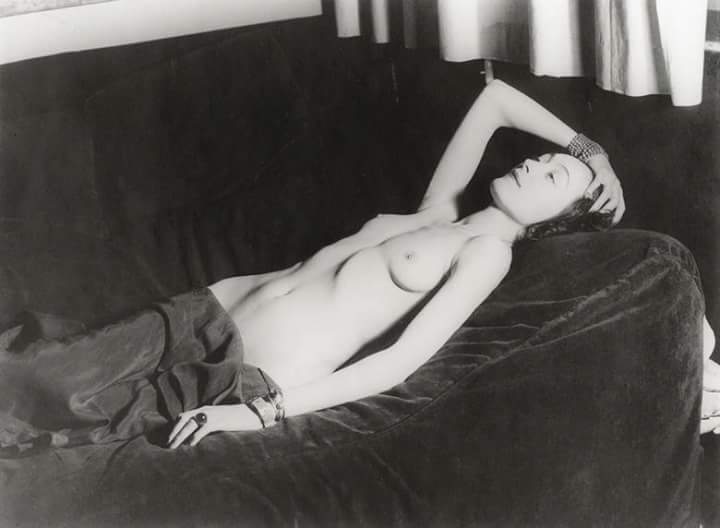 Photo: Man Ray "Portrait of Nusch Eluard"
Photo: Man Ray "Portrait of Nusch Eluard" click
click














